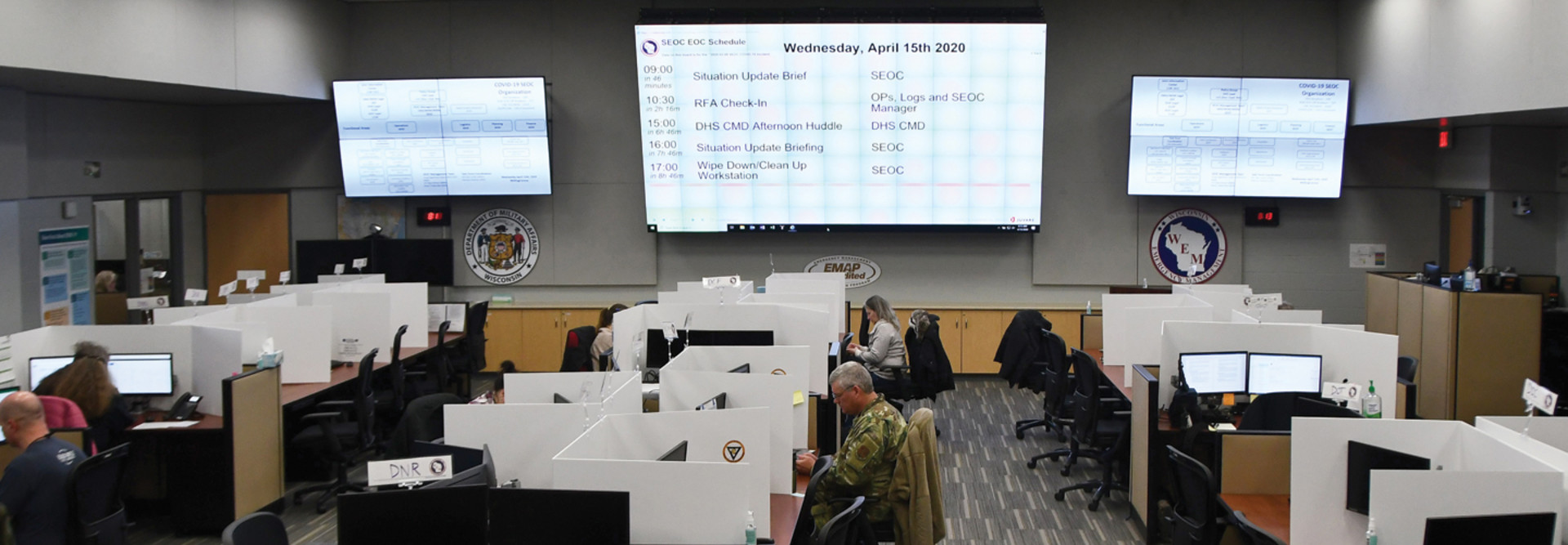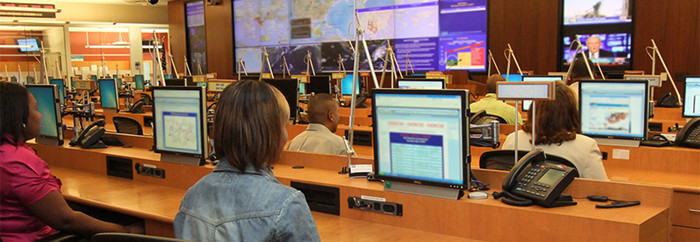What Is the Role of an Emergency Operations Center?
An emergency operations center can be a building or a room, or a virtual EOC set up via telephonic and collaboration tools “designed to support emergency response, business continuity and crisis communications activities,” Ready.gov notes. EOC staffers, which are often drawn from local, state and federal public safety or emergency response agencies, manage preparations for an upcoming incident or the response to an ongoing one.
“By gathering the decision makers together and supplying them with the most current information, better decisions can be made,” Ready.gov notes.
Jim Spell, who spent 33 years as a firefighter with Vail Fire & Emergency Services in Colorado and the past 20 years as a captain, writes in FireRescue1 that an EOC has six main objectives.
The first is to “provide continuity and communications throughout an event or incident, by identifying challenges, providing solutions and taking recommendations.” A second element of an emergency operations center’s purpose is to “coordinate responding local, state and federal agencies, organizations and companies, command and control, including legal requirements and political ramifications.”
The third, Spell writes, is to “provide resources and personnel throughout the divisions, sections, branches and units associated with ICS/National Incident Management System.”
EOCs also need to “manage data, general and public information utilizing recognized and scheduled forms and communication channels,” and “deal with overall financial pressure and immediate expenditures.” Finally, Spell writes, EOCs must “plan for the unexpected.”
A training document from the Federal Emergency Management Agency on EOCs notes that they “provide a means of centralizing and managing communications and information within an EOC, between an EOC and the Incident Commander in the field, and between the EOC and the public.”
FEMA also notes that “there is no one type of EOC; they vary in size and configuration, and most facilities will serve dual purposes.”
How to Set Up an Emergency Operations Center
According to a U.S. Department of Homeland Security document on the National Incident Management System, EOCs “may be organized by major discipline (e.g., fire, law enforcement, or emergency medical services); by emergency support function (e.g., transportation, communications, public works and engineering, or resource support); by jurisdiction (e.g., city, county, or region); or, more likely, by some combination thereof.”
Public safety agencies should establish a primary EOC at their main facilities, and a secondary one should be set up at either another agency facility, a temporary facility (such as a hotel) or through a teleconference bridge, according to Ready.gov.
“An EOC is not an on-scene incident command post (ICP) — where the focus is on tactics to deal with the immediate situation,” Ready.gov notes. “An EOC is used to support on-scene activities through the prioritization of activities and the allocation of available resources.”
EOCs “may be staffed by personnel representing multiple jurisdictions and functional disciplines and a wide variety of resources,” according to the DHS document.
For example, the DHS notes, an EOC set up to respond to a bioterrorism incident would likely have some combination of law enforcement, emergency management, public health and medical personnel.














